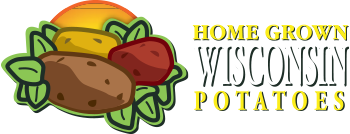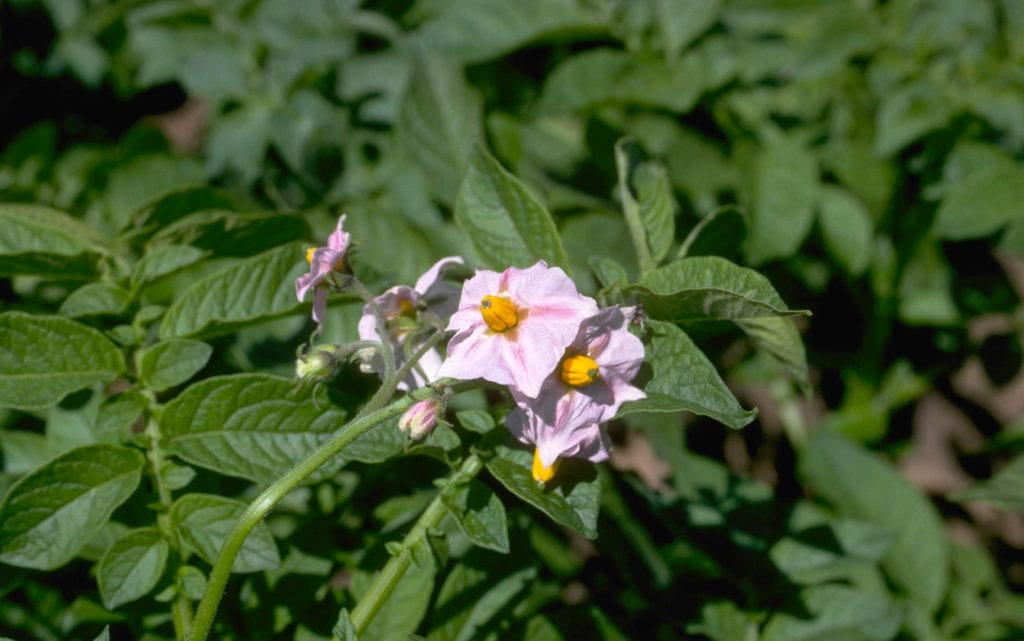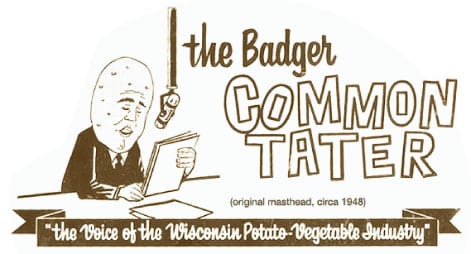 Annual Review
Annual Review
By Leading Scientists
2015 Insect Pest Management Review and Look Ahead to 2016
By Russell L. Groves, University of Wisconsin, Department of Entomology
Perhaps the most notable insect pest issue during the 2015 crop season was the lack of some specific pests.
One insect pest in particular, the European corn borer, (Ostrinia nubilalis), was at an all-time low this year in the state. Recall that the later immature stages (late 4th or 5th instar larvae) of this pest overwinter inside stalk residue of corn principally, as well as weed hosts and even vegetable stems.
In the subsequent spring, the larvae pupate during May and then typically emerge as adult moths in early June.
To get an idea of the infestation potential for this pest species in the coming year, the Department of Agriculture in Wisconsin has conducted fall, stalk-surveys in corn now for 74 years!

This last season, larval populations decreased to an all-time low, according to these annual fall surveys with an average of 0.02 borers per plant (Fig. 1). Amazingly, numbers of this pest have declined drastically since the registration of transgenic corn amended with the Bacillus thuringiensis endotoxin.

Another pest that slowly creeps into prominence is the brown marmorated stink bug (Halymorpha halys, BMSB) (Fig. 2).
This is an exotic, invasive insect pest native to eastern portions of Asia, and specifically China, Japan, Korea and Taiwan.
The BMSB was first confirmed in the United States in 2001, with reproducing populations of reported in many eastern states and a few western states including California and Oregon.
BMSB has more recently been detected in Midwestern states including Michigan, Minnesota and Wisconsin, where it was first detected in 2010.
Since its arrival, the insect has been detected in a few counties mostly along the Michigan Lake shore (Brown, Kenosha, Manitowoc, Racine and Waukesha counties) as well as in south-central locations (Dane and Jefferson counties).
According to the Wisconsin Department of Agriculture, Trade and Consumer Protection (DATCP), specimens were collected from 35 more sites in 2015, mostly in Dane, Brown and Milwaukee counties.
DATCP also states that the number of new cases in 2015 far surpasses the total of 18 confirmed reports in the previous five years combined (2010-2014).
Based on the number of records originating from the Madison area, BMSB is presumed to be established in Dane County and reproducing populations seem to be well established in these localized areas.
Unfortunately, BMSB feeds on a wide range of vegetable, field crop, ornamental and even forest plant species. Many commercially important vegetable and field crops can be at risk, including asparagus, dry beans, green beans, peppers, sweet corn, tomatoes, field corn and soybeans.
The 2016 cropping year brings more uncertainty for pesticide registrations more so than the pests they control. On November 12, 2015, EPA issued a cancellation order for all previously registered sulfoxaflor products (Closer® and Transform®).
This cancellation order is in response to the September 10, 2015, order of the Ninth Circuit Court of Appeals finding that EPA improperly approved the registrations of these pesticides, and the court’s order became effective on November 12.
The neonicotinoid class of insecticides is currently in re-registration review and as a result of some uncertainties regarding the potential environmental fate and effects of neonicotinoid pesticides, particularly as they relate to pollinators.
Mounting evidence suggests that neonicotinoid residues can accumulate in pollen and nectar of treated plants and may represent a potential exposure to pollinators.
Adverse effects data, as well as bee-kill incidents, have been reported, highlighting the potential direct and/or indirect effects of the neonicotinoid pesticides.
Therefore, among other refinements to ecological risk assessment during the registration review, the EPA will now consider new, potential chronic effects of the neonicotinoids to honeybees and other pollinators.
2015 Wisconsin Potatoes
A Year in Review and Projection
By Amanda Gevens, Extension Vegetable Pathologist, Associate Professor, UW-Madison Dept. of Plant Pathology
In general, Wisconsin weather in 2015 offered ideal growing conditions for potatoes. However, the very same conditions also favored some foliar and tuber disease. Most notably, these were late blight, blackleg/soft rot, and post-harvest blemish diseases silver scurf and black dot.
By the first of June, most of Wisconsin’s early planted potato crop had accumulated threshold Disease Severity Values (DSVs) or late blight risk values, which indicate likelihood of late blight infection if the pathogen is present.
The first detection of late blight in Adams County occurred on June 23rd. All plantings of potato across Wisconsin had reached threshold DSVs by July 8th. Late blight management required frequent fungicide applications.
Currently, we have many fungicide tools available for late blight control, however, selection of specific materials to make an ideal preventive program throughout a long production season is challenging.
Syngenta is launching a new late blight fungicide, Orondis, which is a new mode of action fungicide known as oxathiopiprolin (Group U15). This fungicide will provide an additional and highly effective tool for use in an integrated management program.
My program will continue to support our industry with Blitecasting, the statewide late blight monitoring program, as well as further epidemiological research and extension programming to address late blight awareness and management in commercial and non-commercial, conventional and organic, tomato and potato systems.
Blackleg, caused most commonly by Pectobacterium atrosepticum, typically makes sporadic annual appearances in WI potato production. However, there was heightened concern with the nature of the bacterial species in 2015 due to detection of another blackleg pathogen genus, Dickeya, in the U.S.
Depending upon the species, Dickeya can cause more severe and rapid breakdown of potato plants.
The species of greatest concern at this time, is currently being termed Dickeya solani, which was detected in the Netherlands, Belgium, Finland, France, Israel, Poland, the UK, Denmark, and Sweden during 2005 to current.
This bacterium is believed to be more aggressive than both P. atrosepticum and D. dianthicola. Detection of these pathogen species can be challenging as soft rotted potato tissues are often invaded by multiple bacterial species, making the answer to “who dunnit,” not so straight forward.
There are efforts in the U.S. to address the detection, risk, and management of this bacterium in coordination with the National Potato Council. UW-Plant Pathology’s Dr. Amy Charkowski is engaged in aspects of research of this pathogen group.
Silver scurf and/or black dot were evident in potatoes at time of harvest in a number of production fields, especially on red, yellow and purple specialty varieties.
The two diseases are sometimes present together and are not easy to differentiate by visual symptoms alone. In cases where reds were left in fields post vine kill for an extended period of time (>2 weeks), symptoms of these blemish pathogens were severe.
We continue to learn more about chemical and cultural control measures for these diseases throughout the potato life cycle.
Currently, we are developing collections of pathogen isolates, and are running several field and storage studies with various treatments, so that we may better understand the disease and fungicide resistance in multiple commercial locations in Wisconsin.
In addition to the previously mentioned disease work, the UW-Potato and Vegetable Pathology program continues to develop fungicide programs for potato early blight, common scab, pink rot and Rhizoctonia/Black scurf.
As appropriate, we will focus on programs in the production field, as well as in the post-harvest phase of potatoes.
We are also working to improve and aggregate online agricultural weather data and disease/pest management tools for the potato and vegetable industries of Wisconsin.
Are There Better Ways to Assess Plant Nitrogen Status In-Season?
By Matt Ruark, Department of Soil Science
The normalized difference vegetation index (NDVI) is a measure of plant greenness and is being studied extensively in corn production systems to guide mid- to late-season N applications.
This requires to things: (1) a crop sensor (handheld or tractor-mounted) and (2) a reference strip in the field where N was definitely not limiting.
The handheld NDVI sensors are easy to use. The operator walks through the field holding the sensor at a consistent height. The NDVI measures reflectance across the whole crop canopy and the user obtains a value immediately.
Having a reference strip that is non-N limiting is essential to know if more N may be required. The NDVI measurement, however, is not well studied in potato production systems.
In 2015, at the Hancock Agricultural Research Station, NDVI values were compared against the more popular in-season N assessment method of petiole nitrate-N concentrations.
At 45 and 60 days after emergence, both NDVI and petiole nitrate-N was assessed in a nitrogen fertilizer rate trial on Snowden.

As shown in Figure 1, there was a wide range in values of petiole nitrate-N concentrations at both 45 and 60 days after emergence. However, there was not much difference in the NDVI values across these different petiole nitrate-N concentrations, except for when petiole nitrate-N was below 0.1% at 60 days after emergence.
Thus, NDVI did not appear to be a sensitive measure across these N rates on Goldrush. This is somewhat expected, as NDVI is a measure of plant greenness and the nitrate-N concentrations in the petiole will decline more rapidly than the overall greenness of the plant if N should become limiting.
The NDVI helped with identifying N rates that clearly had run out of N, but was not helpful in identifying plots where additional N may increase yields in the 10-30 cwt/ac range.
The NDVI may not be able to help with subtle adjustments to N later in the growing season. Of course, more work will be conducted to evaluate its benefit across multiple growing seasons.
Weed Management Synopsis and Outlook
By Jed Colquhoun, Department of Horticulture, University of Wisconsin
Likely the most significant happenings in potato weed management during the 2015 growing season occurred in regulatory offices and not in the field, and the potential impact of these actions will be felt well beyond the 2016 growing season.
In late March of this year, the Wisconsin Department of Agriculture Trade and Consumer Protection (DATCP) confirmed that linuron herbicide, sold as Lorox and Linex 4L, cannot be used on sand or loamy sand soils or soils with less than 1% organic matter.
The Wisconsin Department of Agriculture Trade and Consumer Protection (DATCP) and U.S. Environmental Protection Agency (EPA) further clarified that these restrictions are to protect groundwater.
On other soils where use is allowed, linuron is a valuable tool for control of problematic weeds such as common ragweed and Eastern black nightshade and to reduce the risk of selecting weeds resistant to the few modes of action available in potatoes.
Additionally, linuron has been a crucial tool for carrot weed management. In response, we initiated several research projects to investigate the potential to expand options for control of these and other weeds in potatoes and rotational vegetables.
The initial results have been promising as we have been able to maintain weed control as well as crop yield and quality, but covering the spectrum of weeds encountered across Wisconsin remains a challenge.
These studies will continue in the 2016 growing season.
News on the regulatory front continued with notice in September that restrictions to the use of the herbicide diquat are proposed as part of the national reregistration evaluation.
Every 15 years the EPA is required to reevaluate pesticide registrations. Diquat has been a mainstay for potato vine desiccation for many years, speeding up vine kill and enhancing skin set and stolon separation.
Additionally, diquat may reduce plant disease risk by eliminating green plant tissue in the field and limiting pathogen entry into tubers through solid skin set.
Several restrictions have been proposed in the diquat reregistration process, including limitations to the rate and number of applications, but by far the proposed application timing restrictions are most concerning for potato growers.
The EPA draft risk assessment indicated that diquat use might need to be limited to fall and winter months, effectively eliminating use as a potato vine desiccant in our production region.
The potato industry and research community entered many public comments reflecting the potential impact of such a restriction, so stay tuned!
In the meantime, we have been investigating several alternative vine desiccation systems that will speed up vine kill and enhance skin set.
Our work has targeted early season potato vine desiccation as the most challenging scenario, when vines remain healthy and actively growing. We will continue this work in research and commercial settings in the 2016 season.
Finally, weed resistance continues to be a major threat to Wisconsin specialty crop production. We now have glyphosate resistant weeds in the state, including horseweed, giant ragweed, Palmer amaranth and common waterhemp.

Palmer amaranth is a relative newcomer to potato production areas in Wisconsin but is an extremely aggressive weed that produces many thousands of seeds.
These weeds are challenging to manage in any setting, so be sure to integrate and diversify weed management options to protect the few tools we have left in specialty crops.
Additionally, scout fields for escaped weeds, paying particular attention to those that are normally controlled by the herbicide in question. In light of regulatory and resistance risks, we will continue work in 2016 to expand weed management options in potatoes and rotational crops.
Palmer amaranth in a Dane County field. Note the elongated seed heads that contain many thousands of seeds per plant. Photo courtesy Vince Davis.



